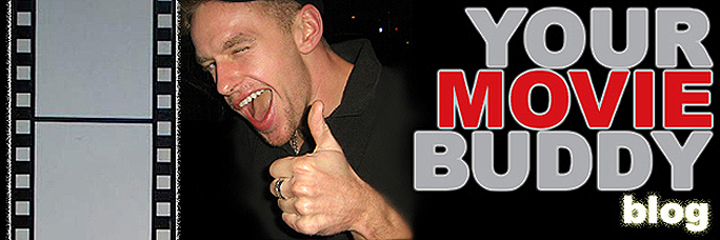I’m Not There (4 stars out of 5)
It’s hard for me to write a valid critique of I’m Not There, Todd Haynes’ visionary meditation on the varied identities of Bob Dylan, because I’m not a devout fan of the man and his music, nor do I know a great deal about his life... er, lives. Since I’ve been awake and breathing since 1984, I do know that he’s one of America’s greatest and most influential poets, and that the extent of his celebrity as an artist is vast enough to warrant an event picture in which six different actors play him. I went to see this film with a friend who is a Dylan fan - a big one, and when asked what his overall reaction to the movie was, he replied saying he felt that Haynes captured the enigma of Dylan just right. As my friend tells it, nobody’s ever really known who Dylan is; and if the film is accurate, then throughout his career, Dylan appears to have known least of all. He’s depicted here as being many people - quite literally. Christian Bale, Heath Ledger, Cate Blanchett, Ben Whishaw, Richard Gere and young Marcus Carl Franklin are his eclectic faces, each of which it seems he wore and tossed away like an old hat. Dylan’s indecision (or perhaps, inability) to stick with a single persona has no doubt made his allure that much stronger, and it suggests that he’s been a puzzle not only to his public, but also to himself. And it makes for a hell of an interesting film.
 I’m Not There is unlike any movie about a person I’ve ever seen before. I’m intentionally avoiding the term "bio-pic," because that’s not what Haynes has done. There is no rise and fall here, no obligatory headlines flashing at the screen, not even a conventional narrative (the segments are shown in semi-chronological order, but with an almost emotion-driven inconsistency). And while Dylan tunes play throughout and stage acts are featured, there’s not a show piece to be found (a la Walk the Line); for it’s not so much about the music as it is about the curious facets of the man underneath. What Haynes has created is an interpretive portrait of one elusive artist from another. There’s a romanticism present that illuminates a great admiration that the director must have for his subject - and no doubt a kinship, as Haynes too remains an enigmatic figure. If you’ve never looked into him, you’ve likely never seen his face, and his resume as an American auteur is as diverse as the actors he’s assembled for this project.
I’m Not There is unlike any movie about a person I’ve ever seen before. I’m intentionally avoiding the term "bio-pic," because that’s not what Haynes has done. There is no rise and fall here, no obligatory headlines flashing at the screen, not even a conventional narrative (the segments are shown in semi-chronological order, but with an almost emotion-driven inconsistency). And while Dylan tunes play throughout and stage acts are featured, there’s not a show piece to be found (a la Walk the Line); for it’s not so much about the music as it is about the curious facets of the man underneath. What Haynes has created is an interpretive portrait of one elusive artist from another. There’s a romanticism present that illuminates a great admiration that the director must have for his subject - and no doubt a kinship, as Haynes too remains an enigmatic figure. If you’ve never looked into him, you’ve likely never seen his face, and his resume as an American auteur is as diverse as the actors he’s assembled for this project.Apparently Haynes was going for attitudes more than likenesses when dreaming up the casting for his brain-child, as Franklin is black and Gere (aging and scruffy or no) is nowhere near a ringer for the folk-rock legend. The most avant-garde of choices was Blanchett as Dylan when he first went electric in 1965, but it pays off so incredibly well that it’s safe to call Haynes a genius for it alone. Anyone who’s seen D. A. Pennebaker’s 1967 documentary Don’t Look Back will be floored by Blanchett’s segment. She is that Bob, complete with the swagger, the smoking, the somewhat falsified disdain for anything "important," and the insistence of brushing off reporters’ probing questions with the arrogance of a stubborn teenager. If there was ever any doubt that Blanchett is the heir to Meryl Streep’s throne as the greatest living American actress, it’s confirmed with this performance, one that is so layered it will be talked about for years. It’s less a portrayal than a full-on embodiment, and even that doesn’t sound like the proper acclaim. Her own Oscar-winning turn as Katharine Hepburn in The Aviator feels like mimicry in comparison, and she and Haynes play with the gender aspect with just the right amount of "we get it" irony. She is the centerpiece of this uniformly well-acted biographical fantasy, with Bale taking second place as Bob, the lifelong tortured artist.
Blanchett’s contribution is so good that the other portions start to pale in contrast once she’s made her drumroll-preceded debut. By the time Gere takes his bow as an older Dylan trapped within the quasi-imaginative realm of his lyrics (or at least, that’s how I read it), I was deep in Cate-land; and I’m Not There begins to wane as it runs on too long after each of the six Dylan songs have reached their crescendo. That doesn’t stop it from being one of the most original films of the year, in which a vanguard of one medium pays tribute to a pioneer of another.


No comments:
Post a Comment